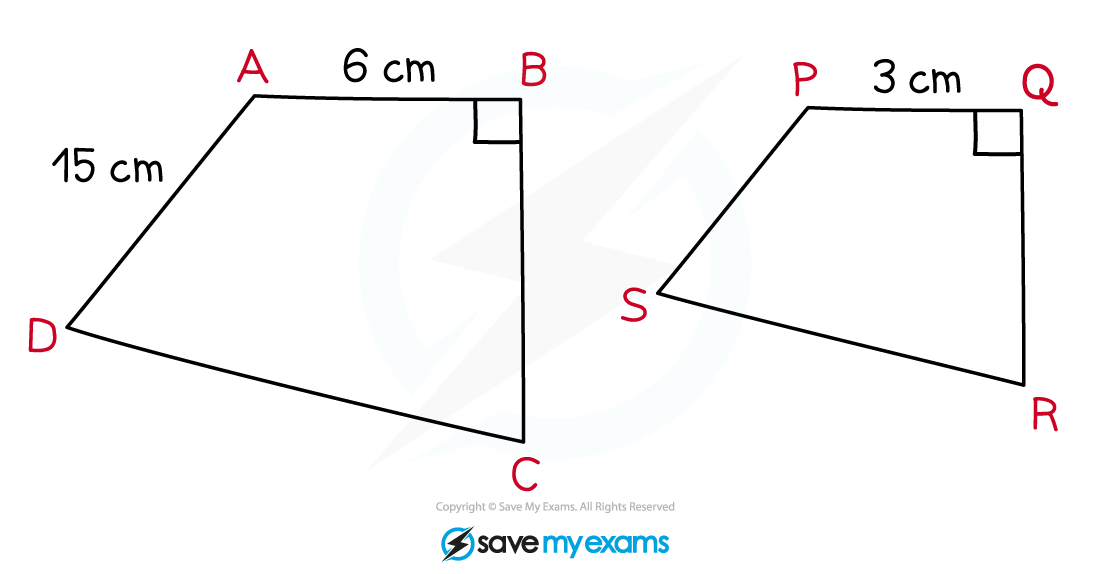Similar Lengths (Cambridge (CIE) IGCSE International Maths): Revision Note
Exam code: 0607
Did this video help you?
Similar lengths
How do I find the scale factor between lengths on similar shapes?
Equivalent lengths on two similar shapes will be in the same ratio and are linked by a scale factor
Establish the type of enlargement
If the second shape is bigger
then the scale factor is greater than 1
If the second shape is smaller
then the scale factor is greater than 0 but less than 1
To find the scale factor
Identify known lengths of corresponding sides
Divide the length on the second shape by the corresponding length on the first shape
How do I find missing lengths on similar shapes?
Method 1
STEP 1
Find the scale factor to get from the first shape to the second shapeDivide a length on the second by the corresponding length on the first
The scale factor can be less than 1 for this method
STEP 2
Use the scale factor to find the length you needTo find a missing length on the second shape
Multiply the corresponding length on the first shape by the scale factor
To find a missing length on the first shape
Divide the corresponding length on the first shape by the scale factor
Method 2
STEP 1
Find the scale factor to get from the smaller shape to the bigger shapeDivide a length on the bigger shape by the corresponding length on the smaller shape
The scale factor is always greater than 1 for this method
STEP 2
Use the scale factor to find the length you needTo find a missing length on the bigger shape
Multiply the corresponding length on the smaller shape by the scale factor
To find a missing length on the smaller shape
Divide the corresponding length on the bigger shape by the scale factor
Examiner Tips and Tricks
If similar shapes overlap on the diagram (or are not clear) draw them separately.
For example, in this diagram the triangles ABC and APQ are similar:

So redraw them separately before starting:

Worked Example
ABCD and PQRS are similar shapes.
Find the length of PS.

The two shapes are mathematically similar
Identify two known corresponding sides of the similar shapes
AB and PQ are corresponding sides
Method 1
The second shape is smaller than the first shape so the scale factor will be between 0 and 1
Divide the known length on the second shape by the corresponding length on the first shape to find the scale factor
Multiply the length AD by the scale factor to find its corresponding length PS on the second shape
Method 2
Divide the known length on the bigger shape by the corresponding length on the smaller shape to find the scale factor
The missing length is on the smaller shape
Divide the length AD by the scale factor to find its corresponding length PS on the smaller shape

You've read 0 of your 5 free revision notes this week
Unlock more, it's free!
Did this page help you?